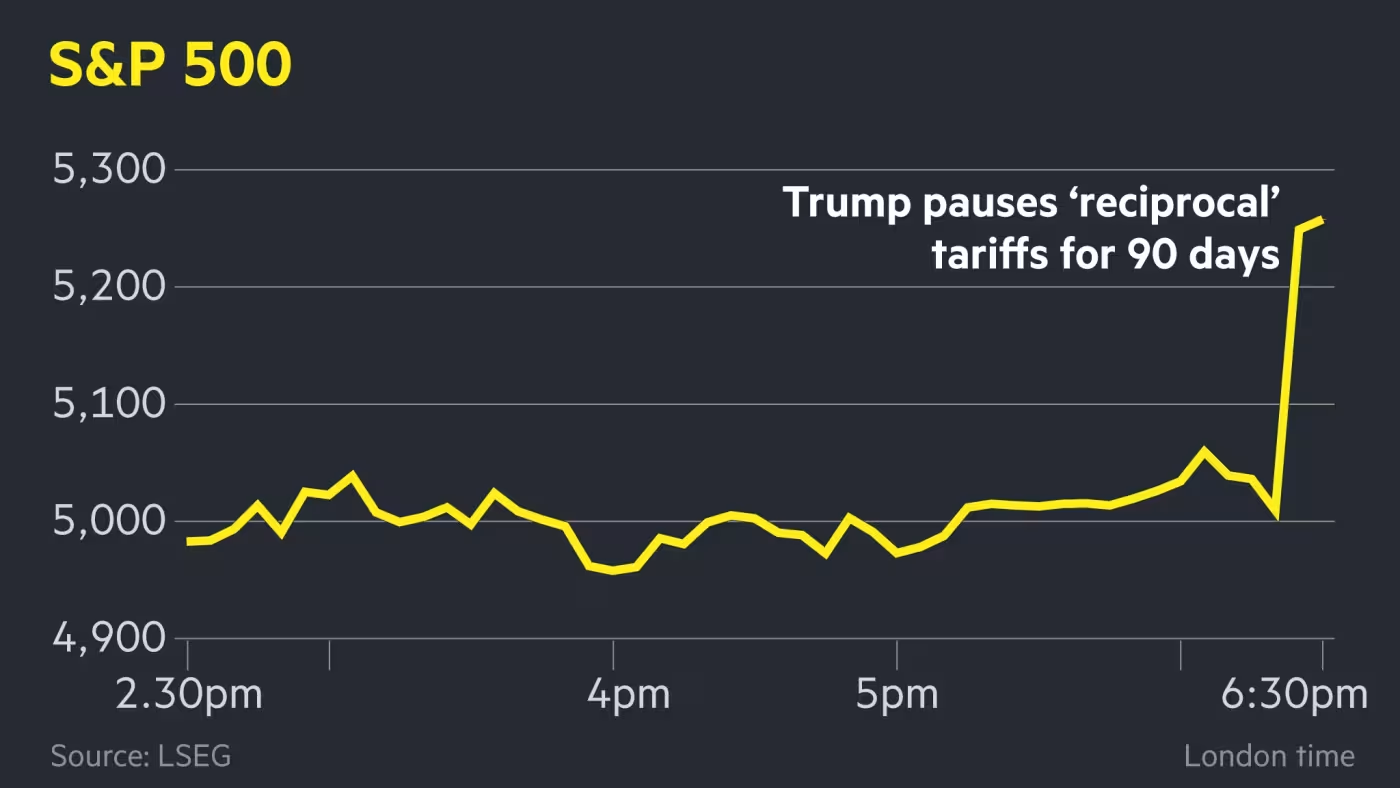Liberation Day was not just about declaring the US independent of the rest of the world. It was about redrawing the lines. It was about identifying where the new Iron Curtain has been pulled in the bubbling cold war with China. By applying pressure to every country in the world, Trump now knows which countries are on America’s side and which ones are likely to side with China. With the battle lines drawn, he can finish the war on China that he started back in 2018. US versus China is the Second Cold War.

China gains on influence
The Second Cold War is not an ideological one. Instead of a competition between democratic capitalism and soviet communism, this is two strongman generals at war. Partly personal, partly liberation versus subjugation, entirely consequential. This war has been bubbling under the surface for decades. While Russia has made land conquests across former Soviet territory, China has been nation-building on every continent. Whether it’s capital investment in Asia, Africa, and Latin America or Confucius Institutes in European and North American universities, China’s ideology already permeates throughout the world. The US would likely not win another ideological cold war.
A new playbook
With a different dynamic to the last cold war, this war with China has different rules. Trump claimed victory over China in his first presidency when the trade war led to the Phase One deal. The pandemic clause which voided that deal was likely intentional, given the unreported rapid spread of Covid in China at the time. China ultimately faced down the entire trade war successfully and Trump lost re-election. With a taste for revenge and a more loyal team of advisors, Trump will wage war on China with greater effect.
Since this Cold War with China is strategic, not ideological, Trump has a full arsenal of tactics at his disposal. Without the constraints of ideology, he can treat it like a normal negotiation.


Tariffs
The use of tariffs is the clearest indication that this is not an ideological war. While targeted tariffs have been part of negotiations in the past, the free trade worldview espoused by democratic capitalism generally frowns on their use. Trump is not limited by ideology so he is free to use tariffs liberally, despite the ideological opposition from much of his own base. While the imposition of tariffs on penguins in the Indian Ocean was likely a mistake, it certainly underscored just how blanket the tariffs are. No-one is safe, not even Skipper, Rico, Private, and Kowalski!
Hardball
The last week has let Trump identify 75 voluntary allies who chose the US over China when the pressure came. This gives the US the upper hand in each of these negotiations. After all, the US didn’t ask for these negotiations. The 75 individual countries did. Liberation Day positioned the US as the global hegemon. It’s safe to say that any country that receives 75 individual requests for a trade deal holds all the leverage.


Tariff reprieve
The tariff reprieve is not a retreat. A retreat would restore tariffs to their pre-April 2 levels. Instead, Trump doubled down against China and reduced tariffs on everyone else to 10%. 10% only looks small beside the whopping 125% tariff on China. This is a holding position to expedite favorable trade negotiations. In the last cold war, America’s allies were mostly obligated through the Marshall Plan and other nation-building initiatives. This time, Trump has an army of 75 countries voluntarily siding with the US over China, incentivized by ongoing trade negotiations. A free alliance behind a single leader is infinitely stronger than obedient semi-vassal states.
Aid
Perhaps the most shocking move of the last week has been Trump’s treatment of Israel. Long-considered America’s closest ally, Israel removed all tariffs on the US before Liberation Day, expecting to be excluded from the sweeping tariffs. Trump announced a 17% tariff on all exports from Israel anyway. On Tuesday, sitting beside Netanyahu, Trump pointed out that the US gives Israel $4bn per year in aid. Trump may support Israel against Hamas, but that aid comes at a price.

China will lose this Cold War
One week on, it appears that the advice for every country to negotiate was correct. As the US, armed with 75 allies, moves to isolate China, it has all the momentum. As lines are redrawn, countries must side with the US to avoid losing out. The unprecedented alliance in this cold war could do serious lasting harm to the Chinese regime. Concerted effort by the alliance could see significant pushback against nation-building in Africa and Latin America. China will turn to its usual allies only to find itself alone.
- Russia, with a tiny economy compared to the state of Florida, is fighting a war and allegedly relying on China to do so.
- India stands to gain much of China’s manufacturing, so it would be unwise not to stick by the US.
- Other Chinese trade allies like Australia, Japan, South Korea, and the ASEAN countries are part of the 75 allies.
- Brazil is likely to move back to its pro-negotiation stance in the wake of the tariff reprieve.
- The EU, which has retaliated but also signalled willingness to negotiate, will be led by Giorgia Meloni in negotiations. There is no world where a Meloni-led team will side with China over her allies in Washington.
It’s clear, then, that with China’s allies onside, the US could effectively blockade China, reducing it to a shadow of its current state. By following this to its logical conclusion, the US is the single global hegemon and China ceases to be relevant. Yet the logical conclusion does not have to materialize. Merely by redrawing these lines of international loyalty, Trump has built a global army behind US leadership that no country could possibly mess with. It is as though peace through strength can be applied to trade, too.
